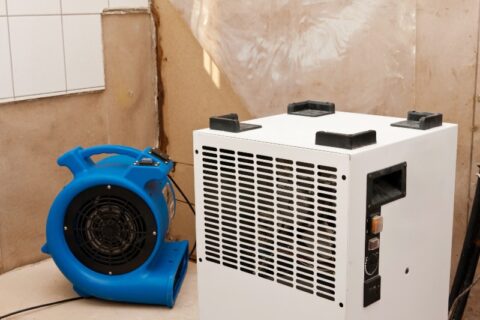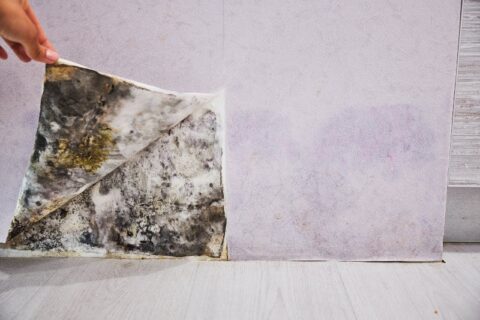Drying Techniques for Water Damage
Finding water damage in your home can be panic-inducing, but immediate dehumidification and drying can significantly reduce the impact. Use a combination of these effective drying practices to help restore your property to its original state.
Natural Air Movement
When the humidity level is moderate, open all your windows and doors to encourage natural airflow and speed up the drying process. Open all cabinet and closet doors in the affected area to ensure air circulation to all the nooks and crannies.
Mechanical Air Movement
Fans significantly boost the drying process. While ceiling and box fans are better than nothing, the most effective way to enhance air circulation is with high-powered fans. Rent or purchase airflow products specifically designed for flood damage restoration efforts.
Dehumidification
Dehumidifiers are essential during flood damage repair. These machines extract water vapor from the air, effectively drying even the most humid rooms in the middle of summer.
Water Extraction
While not every situation requires a sump pump, it’s a handy tool if you have significant standing water. These pumps work tirelessly to remove water from your property, quickly tackling most of the liquid in one fell swoop.
Wet/Dry Shop Vacs
Certain shop vacuums are designed to handle wet conditions, allowing them to safely and effectively remove water from carpeting, furniture, and other textiles. This is your chance to save your most cherished items. Just don’t try sucking up water with your ordinary household vacuum.
Sunlight and Evaporation
Direct sunlight can do wonders for damp objects. Move sodden items, like rugs and furniture, outside to bask in the sun. This aids in drying and reduces the moisture level inside your home as water evaporates from these materials.
Freezer
A trip to the freezer can be a lifesaver for valuable books, photos, and other paper-based products. Place these items in plastic bags and stick them in the freezer to halt further damage and prevent mold growth. Once you’re ready, retrieve items individually and air-dry them at a convenient pace.
Moisture Absorption
Desiccants, such as silica gel and clay, are like sponges. Place them with wet items in airtight containers or sealed areas, like a closet, to draw out the dampness. Some desiccants even change color when they’ve absorbed their maximum amount of liquid, making them easy to monitor and change out as needed.
Advanced Drying Techniques
While the above suggestions are effective DIY drying techniques, professional water damage restoration services use more advanced methods. Here’s what to expect:
- Suction drying, often the first step, is followed by pressure drying for layered structures.
- The push-pull method reduces the spread of construction particles in the air.
- Combining low-pressure fans and a dehumidifier can effectively dry insulation behind the walls and floor.
- For focused drying, wrapping the affected area in plastic accelerates the process.
Pacific Flood Restoration is Your Trusted Restoration Partner
When dealing with water damage, you deserve a dependable, transparent, and ethical service provider. That’s where Pacific Flood Restoration comes in. With our 24-hour on-call emergency service and high standard of customer care, you can trust us for a job well done. For water damage restoration in San Diego and surrounding areas, please contact us at 760-815-3033 today.


